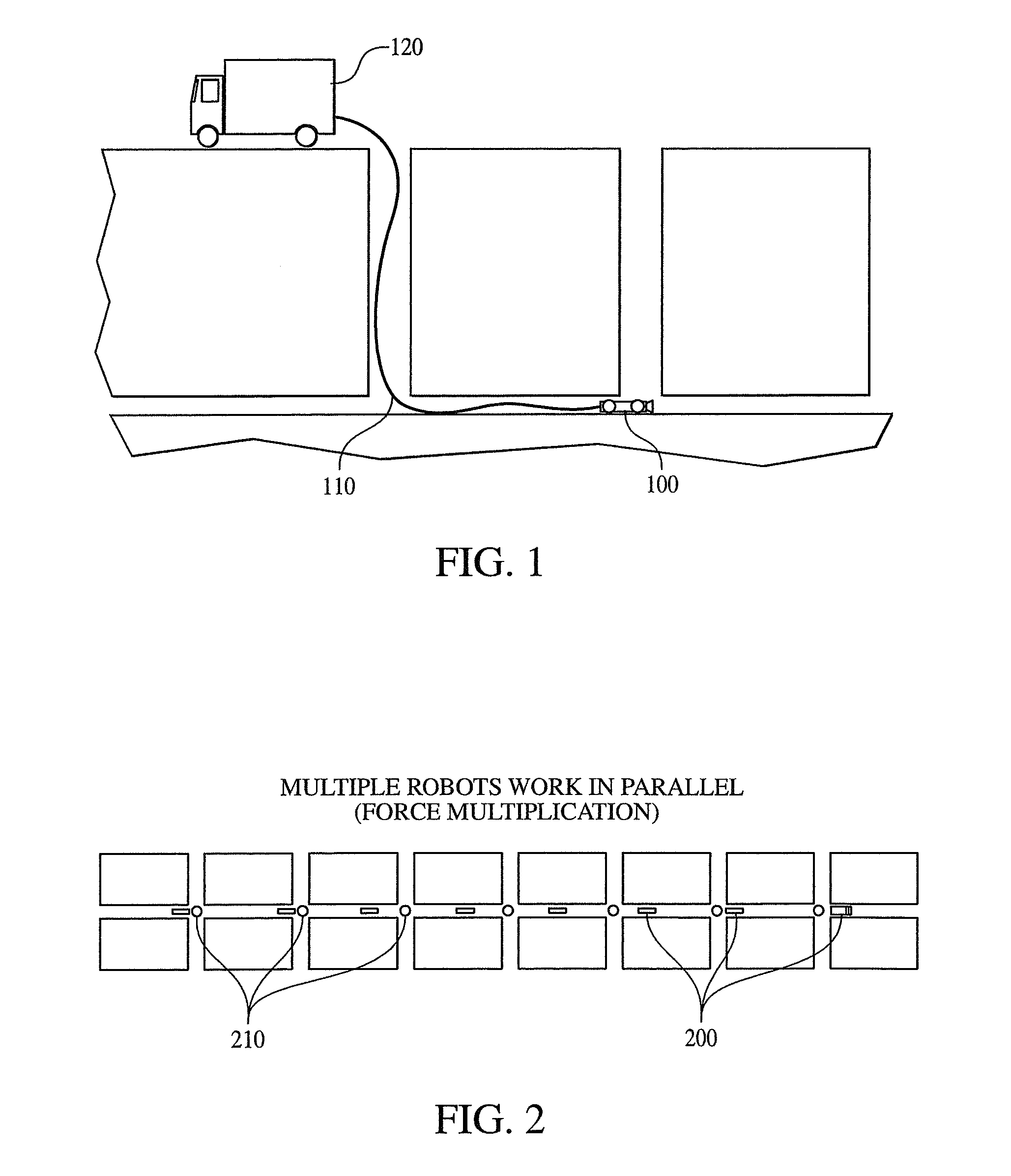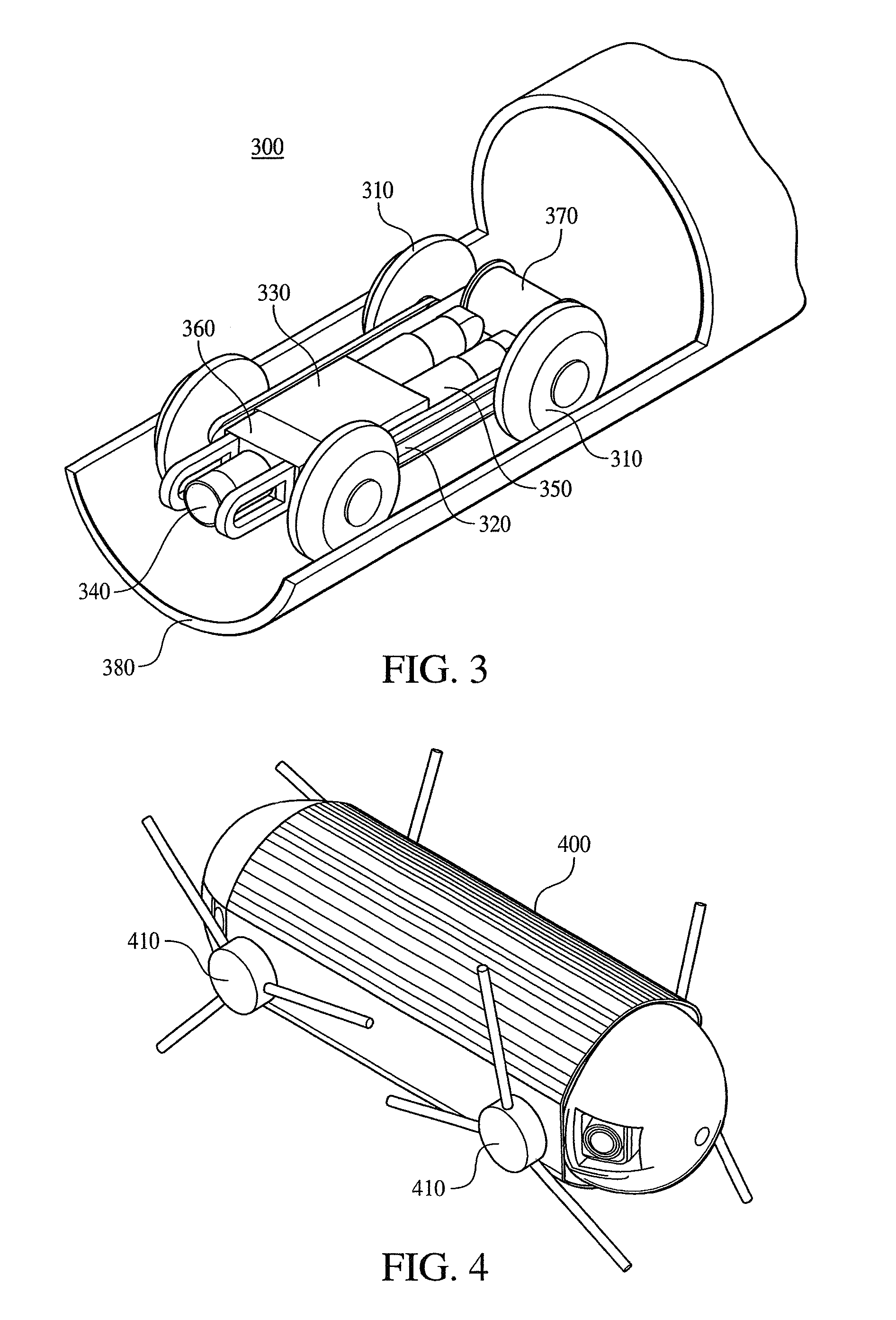Autonomous inspector mobile platform
a mobile platform and inspector technology, applied in the field of robotic devices and methods, can solve the problems of increasing the cost of sewage treatment plants, infiltration and infiltration of sewer systems, outstriping the capacity of treatment plants, etc., and achieve the effect of streamlined and low cost inspection
- Summary
- Abstract
- Description
- Claims
- Application Information
AI Technical Summary
Benefits of technology
Problems solved by technology
Method used
Image
Examples
Embodiment Construction
It is to be understood that the figures and descriptions of the present invention have been simplified to illustrate elements that are relevant for a clear understanding of the invention, while eliminating, for purposes of clarity, other elements that may be well known. Those of ordinary skill in the art will recognize that other elements are desirable and / or required in order to implement the present invention. However, because such elements are well known in the art, and because they do not facilitate a better understanding of the present invention, a discussion of such elements is not provided herein. The detailed description will be provided herein below with reference to the attached drawings.
The present invention is generally directed to an autonomous robotic camera for pipe infrastructure inspection with an optional dual use as a surveillance platform. Specifically, the autonomous inspector mobile platform (“AIMP”) is a compact, autonomous mobile robot that performs imaging a...
PUM
 Login to View More
Login to View More Abstract
Description
Claims
Application Information
 Login to View More
Login to View More - R&D
- Intellectual Property
- Life Sciences
- Materials
- Tech Scout
- Unparalleled Data Quality
- Higher Quality Content
- 60% Fewer Hallucinations
Browse by: Latest US Patents, China's latest patents, Technical Efficacy Thesaurus, Application Domain, Technology Topic, Popular Technical Reports.
© 2025 PatSnap. All rights reserved.Legal|Privacy policy|Modern Slavery Act Transparency Statement|Sitemap|About US| Contact US: help@patsnap.com



